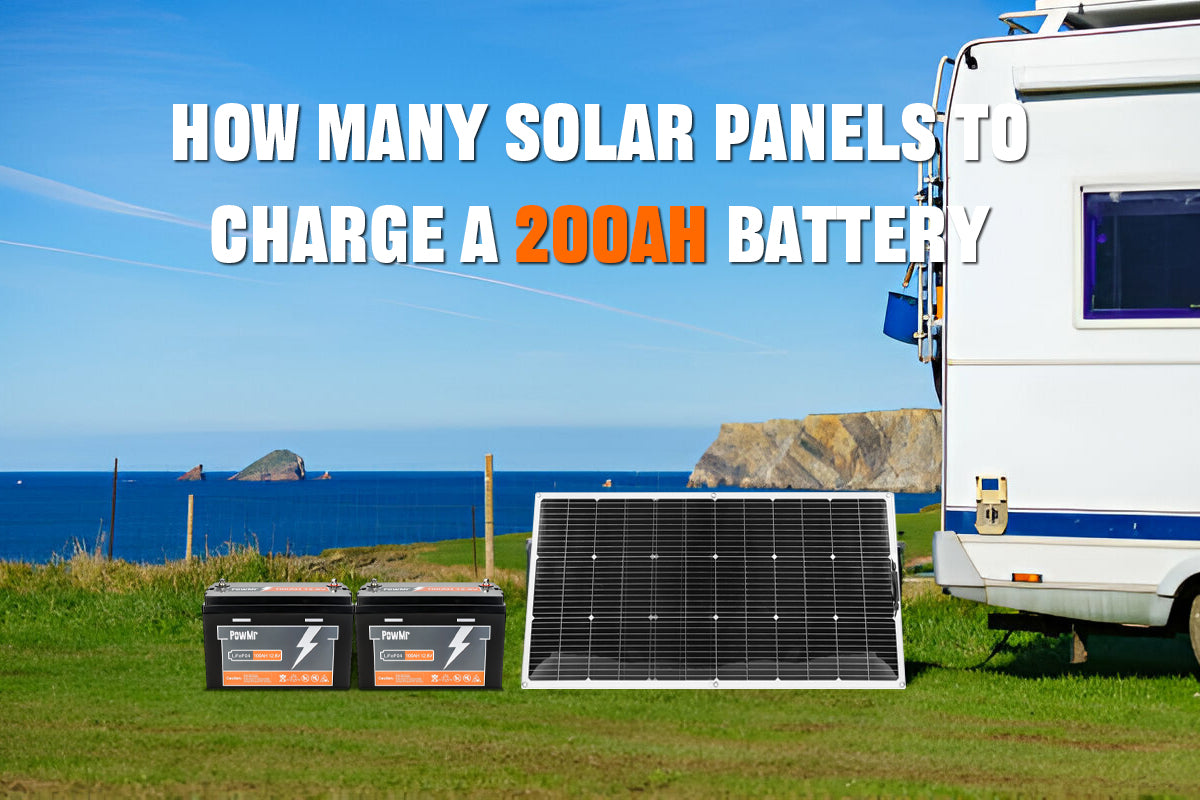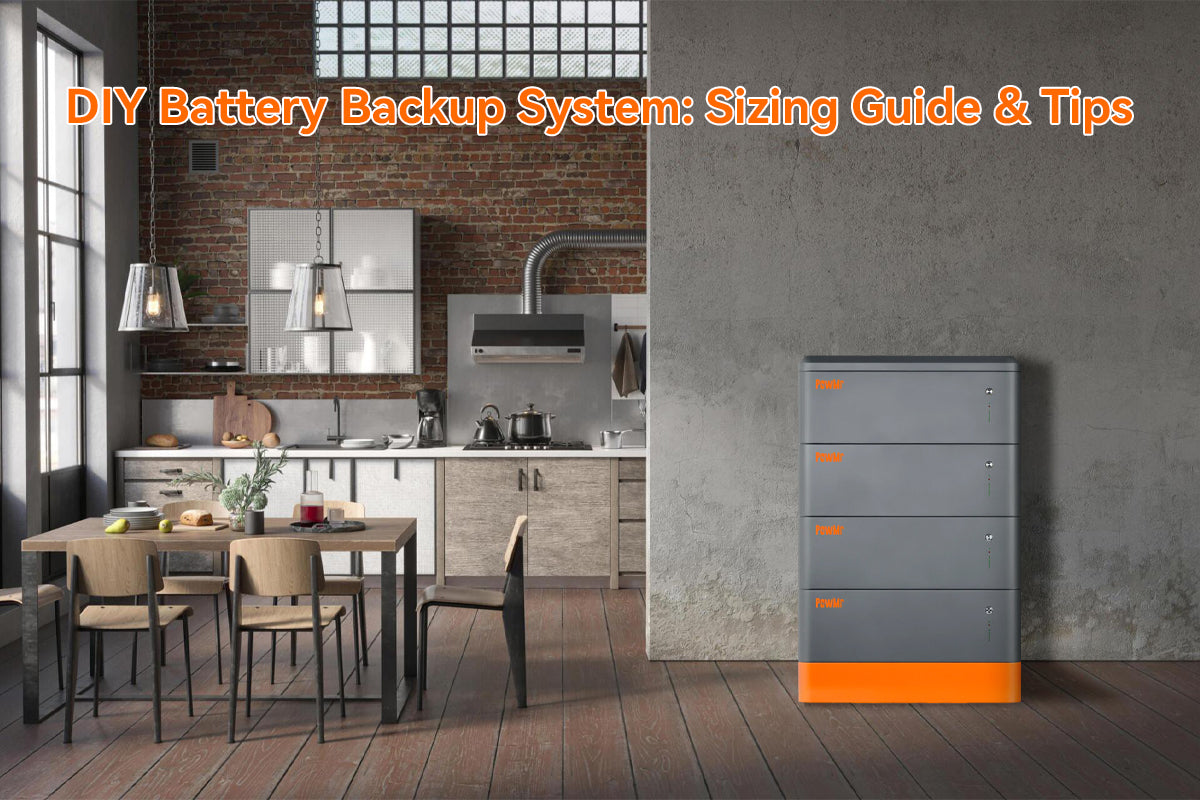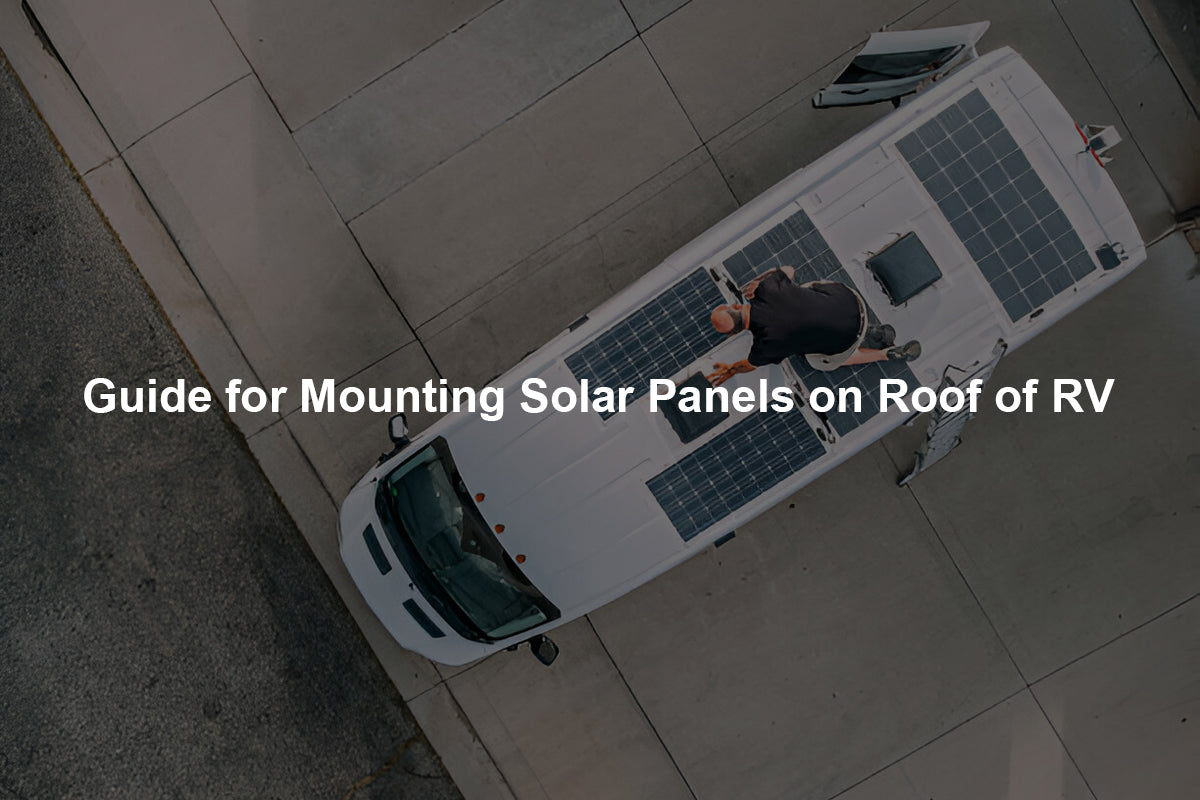In the pursuit of harnessing renewable energy, solar power stands out as a sustainable solution. But if you're wondering how many solar panels it takes to charge a 200Ah battery efficiently, several factors come into play. Let's delve into the intricacies of sizing solar panels and optimizing their effectiveness.
- Factors to consider when sizing solar panel
- How many watt solar panel to charge 200ah battery - Calculation
- Step1 - What size solar panel to charge 200ah lithium battery
- Step2 - How many watt does a solar panel produce
- Step3 - How many solar panels do you need to charge 200ah battery
- Other facors affecting size of solar panels for 200ah battery
Factors to consider when sizing solar panel
Solar panel electricity output is uncertain due to natural environmental conditions and other factors like panel orientation, cleanliness, and technical performance. We'll discuss key factors and estimate the number of solar panels needed to charge a 200Ah battery.
Factor1 - How many kwh is a 200ah battery
The first aspect to consider is the battery capacity, quantified in Ah or kWh, indicating the energy required to fully charge the battery. This measurement allows for an estimation of the power necessary for your solar panel system.
For the sake of convenience in subsequent calculations, it's necessary to convert Ah to kWh.
For example, a 12V 200Ah battery would have a capacity of 2.4 kWh (200Ah * 12V). A 24V 200Ah battery would yield a capacity of 4.8 kWh (200Ah * 24V).
We will calculate the number of solar panels needed to fully charge a 200Ah battery, without taking into account the battery's state of charge (SOC), assuming the battery's residual charge is zero before connecting the solar panels.
Factor2 - What are the peak sun hours for your location
Peak sun hours are indeed defined as hours in the day when the intensity of sunlight reaches an average of 1000 watts per square meter (W/m²). During these hours, solar panels can generate the maximum amount of electricity.
The number of peak sun hours can vary depending on factors such as your location, season, and weather conditions. To keep it simple, let's assume there's an average of 5 hours of direct sunlight daily.
How many watt solar panel to charge 200ah battery - Calculation
Transitioning from the technical details to practical application, let's discuss the required solar panel setup for charging a 200Ah battery. First, we'll determine the necessary wattage for the solar panel system. Then, we'll factor in solar panel efficiency to calculate the number of panels needed.
Step1 - What size solar panel to charge 200ah lithium battery
Knowing the battery capacity and the peak sun hours allows us to calculate the required wattage of a solar panel system to charge a 200Ah battery, i.e., the size of the solar panel system, using this formula:
Size of solar panel system (W) = Battery capacity (Wh) / Sunlight hours (H)
Taking the previous example into account, assuming 5 peak sun hours, for a 24V 200Ah battery, the size of the solar panel system will be 900W (4800Wh / 5h). For a 12V 200Ah batteries, you will need 480Watt of (2400Wh / 5h) solar panel.
Step2 - How many watt does a solar panel produce
We can calculate the size of the solar panel system under the assumption that the actual output of the solar panels is equal to their rated power.
Daily Generation = Solar panel wattage * Local peak sun hour
For instance, assuming a 5 peak sunlight hours a 300W solar panel can produce 1500Wh a day, and a daily generation of a 200W solar panel is 1000Wh.
Step3 - How many solar panels do you need to charge 200ah battery
Now that we have determined the amount of solar energy required to charge a 200Ah battery and the wattage each solar panel can produce, we simply divide the former by the latter:
Number of solar panels = Size of solar panel system required / Power produced by a solar panel
So, for a 12v 200ah, you will need three 200W solar panels. To charge a 24v 200ah in 5 hours, four 300w solar panels is required.
| 200Ah Battery | Energy (Wh) | Required Solar Wattage | Panels @100W | Panels @200W | Panels @300W | Panels @400W |
|---|---|---|---|---|---|---|
| 12V 200Ah | 2,400 Wh | < 480W | 5 × 100W | 3 × 200W | 2 × 300W | 2 × 400W |
| 24V 200Ah | 4,800 Wh | < 960W | 10 × 100W | 5 × 200W | 4 × 300W | 3 × 400W |
| 48V 200Ah | 9,600 Wh | < 1920W | 20 × 100W | 10 × 200W | 7 × 300W | 5 × 400W |
Of course, these examples calculated ilustrate minimum the number of solar panels needed to charge a 200Ah battery within 5 hours under ideal conditions.
Actual requirements may vary depending on factors such as solar panel efficiency, local weather conditions, and system configuration. You may need to adjust the panel wattage, quantity, and as well as the type of connection.
Additionally, there are a few important caveats to keep in mind.
Other facors affecting size of solar panels for 200ah battery
When designing a solar panel system, it is recommended to start by calculating the minimum panel size required. Then, test your system and adjust based on real-world conditions, as designing a solar setup that performs as expected can be challenging due to serveral factors:
System efficiency
Wire resistance, energy losses during charging and discharging, and the efficiency of both the solar panel and charge controller all affect the system. Because of these factors, not all the power generated by the solar panel reaches the battery, resulting in slower charging times.
Sunlight variability
The real output of a solar array fluctuates throughout the day because of factors like clouds, the sun’s angle, and the time of day. These reduce the effective sunlight reaching the panels, resulting in lower charging speed than expected. To ensure reliable battery charging despite these variations, additional solar panels are often needed to compensate for the reduced output.
Types of solar charge controller
In the real world, solar panels usually operate at voltages higher than the battery charging voltage, and the way different solar charge controllers handle this energy varies.
PWM controllers work best when the panel voltage closely matches the battery voltage, but they waste the excess voltage, using only about 60–70% of the panel’s power. On the other hand, MPPT controllers convert the excess voltage into additional current, improving efficiency by roughly 30%.
Consequently, systems with PWM controllers typically need more solar panels than those with MPPT to achieve the same charging performance.
Related Post:Role of Solar Charge Controller & How Does It Work
Usage of the battery
The size of solar panels can be adapted based on battery usage habits and the depth of discharge. Fully draining a 200Ah battery requires more panels to recharge efficiently, while shallower daily discharges allow for smaller panel arrays. To ensure reliable charging during frequent deep discharges or extended cloudy periods, the system may need to be adapted and possibly oversized accordingly.
FAQs
Can I charge a 200Ah battery with one solar panel?
Yes, but only if the solar panel's wattage is sufficient to generate enough energy (in watt-hours) to recharge the battery within your target charging time.
When designing your solar array, you can choose between using multiple smaller panels or fewer larger panels. Multiple smaller panels offer installation flexibility and perform better under partial shading. Larger panels are often more cost-effective and involve fewer connections, which reduces points of failure and system complexity.
What size solar charge controller for 200ah battery?
The size of the solar charge controller depends on both your solar panel output and your system voltage. To calculate the minimum current rating, divide your panel wattage by the battery voltage. Then choose a controller rated slightly higher to ensure safe and reliable operation.
For example, if you need at least 25a solar charge controller to charge a 200ah battery with 600w solar panel, also you can opt for a 40a charge contorller to reduce charging time to 5hours.
Related Post: How Long Does a 200Ah Battery Take to Charge
What size inverter for 200ah battery
The inverter size depends on your load requirements rather than battery capacity alone. While a 200Ah battery can support a wide range of inverters, the total power of the devices connected to the inverter determines both the inverter size you need and how long the 200ah battery will last. The more appliances or higher the wattage you run, the faster the 200Ah battery will drain.
A 2000W pure sine wave inverter is a common choice. It converts DC power from a 12V 200Ah battery to run 1,000W loads for approximately 2.4 hours, theoretically.



